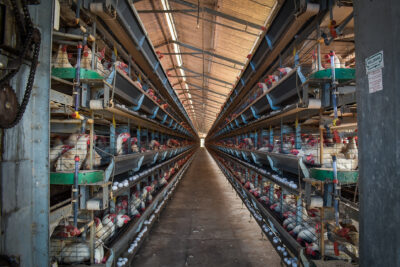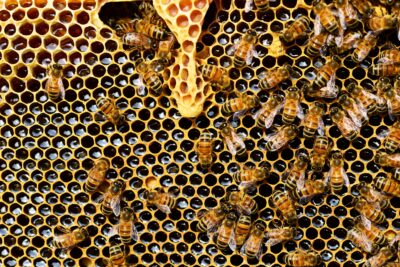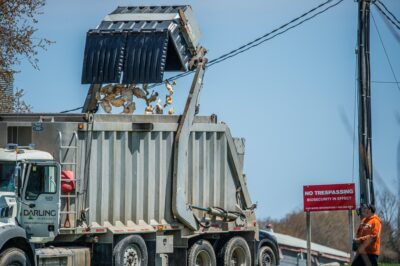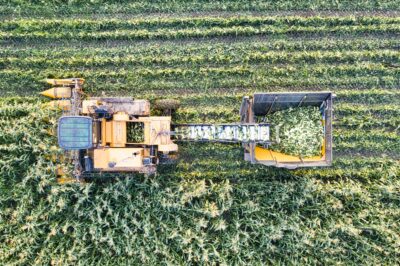Chickens are playful, curious, intelligent animals. But most of them live difficult lives on intensive farms where they have almost no opportunities to express their natural behaviours and personalities. Slaughtered by the billions every year, they are the world’s most farmed land animal.
WHY ARE CHICKENS FARMED?
EGG LAYING
People eat a lot of eggs. In the UK alone, 13.5bn eggs were consumed in 2021 — that’s 202 per person (if we all ate eggs, which we don’t. So some people are eating even more than that each year). Egg production has increased in most countries since the 1960s, with the biggest change being in China, where there has been an increase of 2,200 percent, since the late 1980s.
Commercial hens have been bred to lay around 300 eggs in a year — while wild hens naturally lay one or two clutches of four to six eggs each year. After roughly a year and a half of this process, which uses large amounts of calcium and weakens’ hens skeletons, leaving them with broken bones, their ability to keep providing calcium for eggs tends to decline and many are then sent for slaughter.
MEAT PRODUCTION
Chickens farmed for their flesh are known as broiler chickens. As with eggs, the production of chicken has increased in most countries since the 1970s and 1980s. The US produces the most chickens’ meat by weight — about 20m tons in 2020 — with Americans each consuming an average of 58kg of chickens meat per year. In the UK, chicken is the most consumed animal, at about 33kg per person per year.
Not only are more chickens being farmed globally than ever before, but in most countries the amount of meat provided by each chicken has also increased, as chickens have been bred to gain weight faster.
WHAT IS INTENSIVE CHICKEN FARMING?
An animal farm tends to be classed as intensive based on the number of animals being kept. For chickens in the UK, this means farms that can house 40,000 birds or more. But there are also a number of mega farms with at least 125,000 broiler chickens or 82,000 egg-laying hens. Intensive chicken farming aims to maximise the production of meat or eggs at the expense of the chickens’ health and wellbeing.
WHAT IS DONE TO CHICKENS IN INTENSIVE FARMING?
BATTERY CAGES
Battery cages are the most intensive form of chicken farming and are typically used for laying hens. They are common throughout the world, as many countries have virtually no welfare protections for chickens. A battery cage is usually made of wire, including the bottom, to allow the chickens’ waste to fall through. The floors of battery cages are sloped so that eggs roll down toward the troughs at one end of the cage, where they are then carried away via conveyor belt. Several chickens are usually kept in one cage, with less space given to each than an A4 sheet of paper, making it difficult for the birds to spread their wings or move about.
Battery cages were banned in the UK and the European Union in 2012, in favour of “enriched cages”, which give the hens a small amount of additional space, along with perches and litter. About 36 percent of eggs sold in the UK come from caged hens, while 68 percent are from free-range birds and less than 2 percent from barn systems. But biosecurity measures imposed across England in response to the global bird flu crisis means that no chicken is currently free-range, since they are all required to be kept indoors. Nonetheless, eggs can still be marketed as free-range as long as the time the chickens have been indoors is under 16 weeks — and even that may be extended soon.
CATCHING, TRANSPORT, AND SLAUGHTER
Once broiler chickens reach the desired weight of between 1.9kg and 3.5kg at about six weeks old, they are sent off to the slaughterhouse. The birds are caught and put inside cages on the transport lorry. According to animal protection groups, chickens are most often carried upside down by their legs as standard industry practice, which can damage their fragile legs and joints and compress their internal organs when they are upside down.
Every year, a million chickens in England and Wales are dead on arrival at the slaughterhouse due to being transported without water to drink in poorly ventilated lorries in which they easily overheat. Chickens can legally be transported for up to 12 hours without food, water, or rest. The British Poultry Council has opposed proposals to retrofit lorries to regulate internal temperatures due to the cost.
Many chickens that make it to the slaughterhouse are rejected due to disease or physical defects caused by the way they are farmed. Between July 2016 and June 2019, 61m chickens, mostly broilers but also spent laying hens and breeding birds, were rejected at some point in the meat production process.
The slaughter of chickens in the UK is mostly done by gassing. The chickens stay in their transport cages while they’re killed with various mixes of gases. One small upside to this method is that it reduces the amount of handling the chickens are subjected to and they are not shackled by their feet like the sizeable minority of UK chickens killed using electrical stunning and throat cutting. Stunning chickens is supposed to render them unconscious or dead before their throats are cut, but an investigation in 2017 revealed that stunning was performed ineffectively for about 180 million chickens in the UK.
DEBEAKING
Chickens, particularly layer hens, have their beaks “trimmed” when they are chicks to prevent them from pecking or cannibalising each other as they grow. Beak trimming can cause pain, numbness, and swelling in the beak, which can regrow in an irregular way. Beak trimming performed using a “hot blade” can also lead to bleeding and infection, which can kill the chicken.
Studies show lower on-farm mortality rates in flocks where beak trimming has been done, but the chickens only peck and eat each other in the first place because of their confinement in cages and barns. In the 2010s there was discussion of banning beak trimming, but the poultry industry lobbied hard against a ban, putting their profits ahead of a small improvement to the lives of farmed chickens.
FAST GROWTH
Broiler chickens grow much faster today than they used to, due to selective breeding and high-protein diets. They now grow more than three times faster than the breeds used in the 1950s. This rapid weight gain causes all sorts of problems for the chickens, including putting strain on their hearts and lungs, with many dying from heart attacks. Because their legs aren’t strong enough to support their weight, they struggle to walk and suffer from painful leg disorders.
While more and more retailers are signing up to the Better Chicken Commitment to phase out the use of fast-growing breeds, the poultry industry has opposed change, warning that it would increase the price of chicken meat.
FEED RESTRICTION OF BREEDERS
Broiler chickens have been bred to eat huge amounts and grow at an unnatural rate that makes breeding impossible. For this reason breeder chickens, the parents of broilers, usually have their feed restricted for days at a time to slow their growth and boost their productivity, but research shows that this causes chronic hunger and poor welfare. The European Food Safety Authority has recently recommended that EU countries should avoid the practice (along with the use of cages and debeaking) to improve chicken welfare.
FORCED MOULTING
Chickens naturally moult their feathers at the beginning of winter, when hens stop laying eggs and use their energy to stay warm and grow a new plumage, which also helps rejuvenate their reproductive tract. In the egg industry, forced moulting refers to the practice of making the hens all moult at the same time, so that they will produce larger eggs later. In this way, the hens’ egg-laying life is prolonged, meaning higher profits. Forced moulting is triggered by starving the birds for up to 14 days, or alternatively by giving them nutritionally-deficient feed. The resulting malnutrition can cause aggression, feather-plucking, and feather-eating. The practice is banned in the UK and EU but is common in the US.
GENETIC MANIPULATION
Chickens are bred for different purposes. Broiler chickens bred for the meat industry don’t lay eggs but do put on weight fast. Layer hens are bred to produce as many eggs as possible, rather than to gain weight quickly, so they aren’t used for meat until they reach the end of their “useful” lives. This is also why male chicks born in the egg industry are killed soon after hatching, because they aren’t the right type of chicken to be of use for making meat. Genetic manipulation of chickens has occurred through selective breeding, nowadays done by genetics companies. Most commercial laying hens outside China come from one of two European-based global genetics companies, Hendrix Genetics and Erich Wesjohann Group GmbH (EW Group).
OVERCROWDING
Laying hens kept in cages never have enough space to themselves, but some farms have been found to illegally breach space limits. One UK farm investigated by Animal Equality in 2020 was shown to be keeping up to 100 birds in one cage with inadequate feed and water, with many suffering severe feather loss and red, raw skin.
Barn-raised chickens also suffer from overcrowding. With thousands of birds housed together in barns (often 25,000 but sometimes as many as 50,000), they have minimal space to move and are disturbed and trodden on by other chickens. Overcrowding can also lead to outbreaks of cannibalism.
TOXIC ENVIRONMENT
The floors of chicken barns are covered in the birds’ waste, which can cause burns on their feet and chests as they spend so much time lying down due to their rapid weight gain.
HOW MANY CHICKEN FARMS ARE THERE IN THE UK?
The number of intensive chicken farms in the UK has increased steadily since the 1990s, with individual farms also getting much larger. There are now more than 1,440 intensive poultry farms — though some of these farms birds other than chickens —with 745 described as “mega farms” with the capacity to hold more than a million birds. Some free-range farms are so big they count as being intensive, but the majority of the farms keep most of the birds permanently indoors. In 2021, the UK raised and slaughtered more than a billion chickens (and about 11 million turkeys).
A small number of large companies control the majority of chicken meat production in the UK, including Faccenda, Moy Park, Cargill, 2 Sisters, and Banham Poultry.
IS INTENSIVELY FARMED CHICKEN BAD FOR YOU?
ANTIBIOTICS
Farmed animals are given antibiotics to prevent them from getting sick as well as to treat infections. In some countries antibiotics are also used to boost the animals’ growth, though this is banned in the EU and UK. Around 70 to 80 percent of all antibiotics are used on farmed animals. This excessive use is a primary contributor to bacterial infections becoming harder to treat, known as antimicrobial resistance, which the World Health Organization has identified as one of the biggest threats to global health.
In most countries intensive chicken farming involves the routine use of antibiotics to keep chickens healthy because their crowded and unhygienic conditions are ideal for the spread of diseases. But in some places chicken farming has made more progress than other types of animal farming on cutting antibiotic use. According to the British Poultry Council, the UK poultry sector reduced its total use of antibiotics by 76 percent between 2012 and 2019.
AVIAN INFLUENZA
Avian flu occurs naturally in wild birds, but poultry farming helped breed the more deadly H5N1 strain which has been tearing through flocks across the world recently. It has also now spread to mammals, including mink being intensively farmed for their fur in Spain, which has got experts more worried about the potential for it to be transmitted among humans.
Other strains of avian flu have already infected humans. In 2021, seven workers on a poultry farm in Russia contracted the H5N8 strain of bird flu, though all recovered and there was no human-to-human transmission.
E. COLI AND SALMONELLA
E. coli and Salmonella are bacteria that live in the intestines of humans and animals, but they can cause serious food poisoning when people eat or handle food contaminated with either of them, particularly eggs and raw or undercooked meat. They spread among chickens through manure and can be spread to meat and eggs during farming, slaughter, and processing. They can also contaminate fruit and vegetables that come into contact with animal waste, such as when it is used as fertiliser.
In one study, a broiler chicken farm in New Zealand was disinfected and tested afterwards for the presence of various bacteria including E. coli and Salmonella. Wall crevices, drinking systems, and vents were all found to be heavily contaminated, with the pathogens likely having been shielded from the disinfectants by an accumulation of organic matter and dust. The floor of the facility was also covered in bacteria, which the researchers believe shows that pathogens are also introduced into poultry sheds from external sources.
VIRULENT NEWCASTLE DISEASE
Virulent Newcastle disease (VND) is a contagious and fatal virus that affects the respiratory, nervous, and digestive systems of captive and wild birds, many of whom die from it without showing any symptoms. It can spread to humans but most people won’t show symptoms, and when they do these can be a mild fever or conjunctivitis. It isn’t a food safety concern, as it would mainly affect people who have come into direct contact with infected birds. The last recorded case in the UK was in 2006.
WHAT ARE THE ENVIRONMENTAL IMPACTS OF CHICKEN FARMING?
Chicken farming has a smaller climate footprint than farming cows or sheep, and this has been used to encourage people to eat more chicken meat in place of red meat. But producing a kilo of chicken meat still produces 9.87kg of emissions, more than triple the emissions of many plant foods including pulses, which produce 1.79kg per kilo. Chickens meat also uses more water and produces much more runoff of excess nutrients which pollute waterways and ecosystems — at 48.7g per kilo of meat produced, compared to 17.08g for pulses. Eggs are also worse on all these measures than pulses and vegetables.
Increasing demand for chicken has also meant more crops are being grown to feed them, requiring increasing amounts of land. Chicken meat sold in UK supermarkets and fast food restaurants has been found to be fed on soy grown in deforested areas of the Cerrado, a highly biodiverse tropical savanna in South America. According to the Poultry Site, 60 percent of soy imported to the UK goes to the poultry sector.
Chicken farms are also a major source of environmental pollution. The River Wye, which runs through parts of Wales and England, has suffered an increasing number of wildlife-killing algal blooms due to excess phosphorous from all the intensive chicken farms in its catchment and the spreading of chicken manure on fields.
INTENSIVE CHICKEN FARMING FACTS
In 2021, there were about 25.8 billion chickens in the world, compared to about 13.9 billion chickens in 2000.
Of all birds on Earth, 70 percent are farmed and only 30 percent are wild.
When people buy chicken from a fast food restaurant, 71 percent never ask where it comes from, according to a survey by World Animal Protection.
Chicken is one of the most popular meats in the world. Between 1996 and 2016, demand grew almost 40 percent in the EU, 89 percent in China and 183 percent in India.
Intensively farmed broiler chickens are typically kept in an artificially lit sheds with computer-controlled heating, ventilating, and feeding systems. The sheds are only cleaned out once the chickens have been sent for slaughter, by which point they are covered in several weeks’ worth of waste.
CONCLUSION
Intensively farming chickens is cruel and environmentally damaging and carries the risk of spreading disease between birds and to other species. The huge global demand for cheap chicken meat and eggs has caused suffering to billions of chickens who are killed after living a fraction of their natural lifespans.
